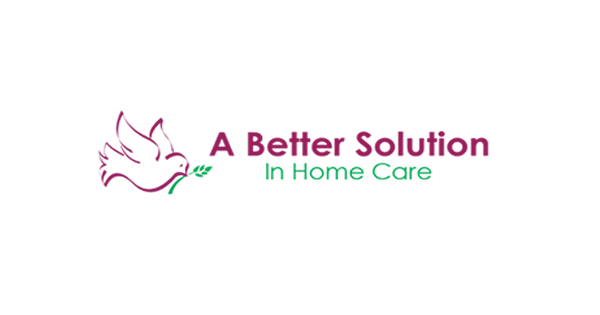Top Healthcare Franchises for Long-Term Investment
A Better Solution in Home Care (ABS) offers a semi-absentee franchise model, allowing owners to manage home care services with minimal involvement. ABS emphasizes caregiver culture, quality assurance, and long-term franchise success through comprehensive support.
Table of Contents:
Introduction
Kurt Busky, president and co-founder of A Better Solution in Home Care (ABS), shares his journey, the franchise’s semi-absentee model, and insights on the home care industry.
About Kurt Busky
Kurt has had several careers, beginning in business administration and human resources before transitioning into social work. He worked in a variety of healthcare environments and eventually ran a nonprofit supporting family caregivers in San Diego County. Kurt became familiar with A Better Solution when contracting non-medical home care services and later partnered with Leah Smith, the founder and CEO, to develop a franchise system.
Developing the Franchise System
Kurt’s first year with ABS focused on preparing the business for franchising, understanding the industry better from within, and creating teachable formats for franchisees. This involved converting policies, procedures, and expertise into a structured and replicable franchise model.
Initial Challenges
- Industry Knowledge Transitioning from understanding the industry as a social worker to grasping franchising intricacies.
- Franchise System Preparation Developing a system that educates and inspires franchisees, taking knowledge out of the founders’ heads and making it replicable.
Q&A – Industry Insights
Surprising Findings
Kurt found surprising the lack of proper caregiver management in the industry. Most competitors treated caregivers as gig workers, making it challenging to foster culture. ABS aimed to create a supportive culture by providing formal performance management, employee recognition, and communication.
Caregiver Treatment and Culture
- Challenges in Caregiver Management Many competitors failed to honor caregivers, treating them like gig workers.
- Creating Culture ABS aims to foster a sense of culture for caregivers, offering employee recognition, performance evaluations, and clear expectations.
Q&A – Communication Challenges
Industry-Specific Issues
- Communication Barriers The dispersed nature of work, with clients in different homes, made consistent communication challenging.
- Quality Assurance Administrative staff must be proactive in maintaining quality standards across various work sites.
Software Solutions
Home care software systems help address these communication challenges, including features like call centers, electronic visit verification (EVV), and centralized note repositories. This technology ensures quality control and provides transparency for caregivers, clients, and families.
Q&A – Recruiting vs. Finding Clients
Recruitment and Retention Challenges
The biggest challenge in the industry is recruiting and retaining caregivers. Caregivers often work for multiple agencies, and with a low-wage workforce, retention depends on offering competitive wages and a supportive environment.
Solutions for Retention
- Understanding Needs Ensuring that caregivers receive the hours and schedules they want.
- Work Environment Quality Creating a supportive and consistent work environment is essential to retaining staff.
Business Model
Economic Model
ABS measures success primarily by hours of service per week rather than the number of caregivers or clients. The goal is to achieve gross margins above 40%, with a healthy balance between billing rates and wages.
- Gross Margin Targets Gross margins should not fall below 40%.
- Overhead Considerations The business doesn’t require large physical locations, keeping overhead costs low.
About the Semi-Absentee and Absentee Model
Introduction to the Model
ABS created a semi-absentee or absentee model for owners with significant net worth but a high opportunity cost for leaving their jobs. This model allows owners to be involved five or more hours per week while a dedicated staff manages day-to-day operations.
Key Features of the Managed Model
- Management Services ABS has a separate company that provides management oversight to semi-absentee owners.
- Owner Involvement Owners must still be available to guide their managers, though most responsibilities are delegated.
Iterations of the Model
The semi-absentee model was introduced in March 2020. Since then, ABS has refined its approach, understanding the level of capitalization required, the type of support needed, and the right personality types for leadership roles.
Franchise Performance and Managed Model Success
Key Insights
- Capital Requirements More capital is needed for semi-absentee owners compared to owner-operators.
- Top Performers Of the top-performing ABS franchises, two started under the managed model, highlighting its success.
Growth and Future Expansion
ABS currently has 21 open franchises and 24 sold. Most new sales involve the managed model, allowing ABS to cater to owners who seek flexibility. However, the company is selective in onboarding franchisees, focusing on building partnerships that align with long-term goals.
Q&A – Owner Profiles and Franchise Selection
Understanding the Right Franchisee
The managed model suits those who cannot be directly involved in day-to-day business, but franchisee motivation (“the why”) remains crucial. Owners must be committed to the business for reasons beyond profit.
Motivation Matters
- Personal Connection Franchisees with a personal connection to caregiving, such as experiences with elderly family members, tend to thrive.
- Industry Comparisons Choosing the right franchisor within a preferred industry is vital, as each franchise system differs significantly.
Conclusion
Kurt emphasizes that franchising is a long-term commitment that involves financial and emotional investments. Success depends on the ability to persevere through tough initial years, particularly in industries like home care, where empathy and motivation play a significant role.



